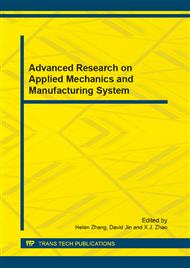p.102
p.107
p.111
p.116
p.120
p.125
p.129
p.134
p.140
Study of Strata Sloughing Mechanism and Anti-Sloughing Measures with Mechanics Properties and Material Properties in Yitong Area
Abstract:
Abstract. As there are serious wellbore instability problems in Yitong area, studying sloughing mechanism and anti-sloughing measures of the strata is of great importance, which differs significantly from the previous researches. Based on the international state-of-the-art, in this work several points are focused on which include the appearance characteristics of the cores, rock mineral composition and the shale physical and chemical properties. Sloughing mechanism is classified and anti-sloughing measures of the strata in Yitong area are proposed. When testing shale physical and chemical properties, several parameters are mainly tested and analyzed, including cation exchange capacity, specific water absorption, shale recovery rate and shale inflation rate. Five core samples are selected and collated data is reflected in tables in the experiment. It is worth mentioning that a new method of specific water absorption is adopted in the study to explain wellbore instability problems, which are caused by hydration. Limitations and shortcomings have been overcome by specific water absorption instead of total water absorption when evaluating water sensibility. The test shows satisfying and excellent results. After applying the anti-sloughing measures to the strata in Yitong area, sloughing accidents have been alleviated.
Info:
Periodical:
Pages:
120-124
Citation:
Online since:
December 2012
Authors:
Price:
Сopyright:
© 2013 Trans Tech Publications Ltd. All Rights Reserved
Share:
Citation:


